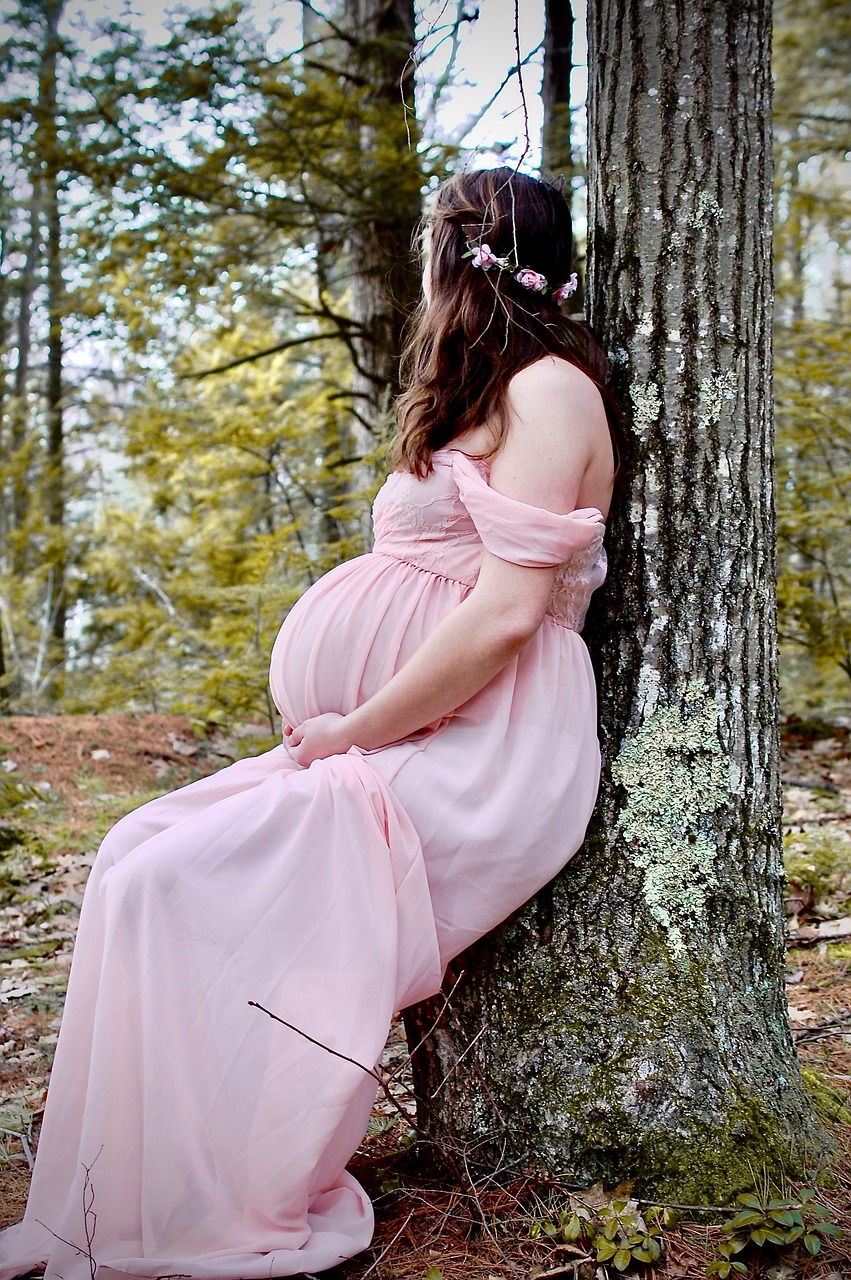Why humidity makes beard bumps worse — and how this guide helps
Humidity turns a quick trim into a skin war: heat, sweat and trapped bacteria make razor bumps far more likely, while hair swells and curls back into follicles. The result is itch, redness and slow-healing bumps that ruin your look and confidence.
This guide gives practical, step-by-step fixes. You’ll learn how humidity affects skin and hair, pro pre-trim routines, trimming techniques and tools that reduce irritation, and targeted aftercare to soothe and protect. Plus weekly habits and product tips tailored for humid climates. Small changes in timing, technique and products can prevent most ingrown hairs—so you can keep your beard sharp and bump-free with minimal fuss and cost.




Understand the causes: how humidity interacts with skin and facial hair
Sweat, salt and follicle irritation
In humid weather your sweat doesn’t evaporate as quickly, so salt and debris sit on the skin. That salty film dries into micro‑crusts that rub on hair shafts and inflamed follicles. Think of an irritant that keeps re‑scratching a healing cut — common after a long commute or gym session on a muggy day.
Trapped moisture, swollen hair and retraction
Warm, damp skin acts like a sponge. Hair shafts absorb moisture, swell and temporarily change shape; when they dry, curly or coarse hairs can spring back and re-enter the follicle instead of going straight out. That physical “popping in” is a major cause of ingrown hairs in humid climates.
Microbes love humidity
Bacteria and yeasts thrive in warm, moist environments. Higher microbe loads increase inflammation around follicles, slow healing, and can turn a tiny bump into an angry pustule. A quick analogy: a clean scratch heals fast; a dirty, damp one gets infected.
Hair texture and mechanical factors
Curly, coarse and wiry hairs are geometrically more likely to curve back under the skin. Combine that with trimming too close, shaving against the grain, or using dull blades, and you create the perfect setup for ingrowns.
Quick, actionable mental model
Practical takeaway for when you trim
Before you shave, imagine the hair as a spring: if you cut it too short or pull it in the wrong direction, it can snap back into the skin. That simple picture explains why guard length, blade sharpness, and drying the skin matter as much as technique.
Prep like a pro: pre-trim skin and beard routines for humid weather
Timing: choose your window
Trim when your face is cool and dry — not right after a sweaty commute or gym session. Heat and fresh sweat increase friction and stickiness; waiting 20–30 minutes after cooling off gives pores time to settle and makes trimming cleaner. Pro tip: schedule trims in a cool room or early morning before humidity builds.
Cleanse with purpose
Start with a gentle salicylic or glycolic cleanser to strip excess oil, salt and dead skin that trap hairs. Try a salicylic option like CeraVe SA Cleanser or a mild glycolic formula for one‑off prep. Rinse thoroughly and pat dry — you want clean skin, not tight, stripped skin.
Light exfoliation to free trapped hairs
A quick, gentle exfoliation loosens embedded hairs. Use a soft physical scrub, exfoliating glove, or a BHA wipe for 30–60 seconds across the beard area. Don’t overdo it: light is enough to free hairs without irritating already sensitive follicles.
Soften or keep it dry — choose by tool
Sanitation for humid conditions
Clean and dry tools before each use to prevent microbial transfer. Wipe blades with 70% isopropyl alcohol, brush out hair clogs, and apply a drop of clipper oil (Wahl or Andis oil) to moving parts. Store tools in a dry place — humidity breeds bacteria and rust.
Pre-shave emollient: light, not heavy
A light, non-greasy pre-shave emollient reduces drag for blade shaving without trapping sweat. Use sparingly and let it absorb briefly.
Avoid heavy oils (coconut, thick balms) before a summer trim — they can trap sweat and increase pore blockage in humid weather.
Trim smart: techniques and tools that lower bump risk
Choose the right tool
Humid climates favor tools that cut cleanly without pulling hairs under the skin. Prefer clippers with guards for everyday shaping or a single‑blade safety razor for crisp edges. Avoid multi‑blade cartridge razors for close work—they lift and cut below skin level, increasing ingrowns. Good practical models: Wahl Color Pro or Andis Master clippers for home, Philips Norelco trimmers for electric convenience, and a quality safety razor like a Merkur or the classic double‑edge set below for blade shaving.
Guard lengths & how often to trim
Choose conservative lengths to reduce irritation:
In humidity, lean one guard longer than you normally would — it’s better to be slightly conservative than to habitually cut too close.
Stroke technique & direction
Trim with the grain first to remove bulk, then a single light cross‑grain pass only where needed. Use short, steady strokes; avoid repeated passes over the same spot. Don’t overstretch the skin — a relaxed surface reduces hair retraction and microtrauma.
Blade care
Replace razor blades frequently (about 5–8 shaves for DE blades; 5–10 shaves for cartridges in humid environments). Clean clippers after each use, dry fully, and oil moving parts. Disinfect blades with 70% isopropyl if you’ve had irritation.
Beard-type adjustments
Aftercare that works in humidity: soothe, protect and prevent
Immediate post-trim steps (first 0–10 minutes)
Right after trimming: rinse your face with cool water to close pores and remove clipped hairs. Pat dry gently with a clean towel—never rub; rubbing drags hairs and inflames skin. Apply an alcohol‑free astringent (witch hazel is perfect) on a cotton pad to calm irritation and reduce bacteria without overdrying.
Then use a lightweight, water‑based moisturizer or aftershave balm that lists glycerin, hyaluronic acid, aloe, niacinamide or allantoin. These hydrate and reduce inflammation without leaving a sweaty film. Good practical options: Neutrogena Hydro Boost Gel Cream (hyaluronic) or NIVEA Men Sensitive Post Shave Balm (alcohol‑free).
Spot treatments for beginning bumps
Catch bumps early to stop escalation.
Start with lower concentrations and test a small area first.
What to avoid and timing tips
Avoid heavy occlusive balms or petroleum jelly right after a trim—those trap sweat and bacteria in humid weather and can worsen bumps. If you need barrier protection, choose a thin, non‑comedogenic gel.
If you’ll be active outdoors, wait at least 15–30 minutes after applying products so they absorb. If you sweat immediately after a trim, cool down first: splash cool water, blot with a clean towel, or use oil‑free blotting sheets. Small changes here stop a hot afternoon from turning into a flare‑up.
Weekly and ongoing habits to stop ingrown hairs before they start
Consistent exfoliation — a schedule that actually works
Use a BHA (salicylic acid) to keep follicles clear: start with a leave‑on 0.5–2% BHA product (examples: Paula’s Choice 2% BHA Liquid, The Ordinary Salicylic Acid 2% Solution). Frequency guideline: begin every other night for 2 weeks, then settle into 2–3×/week if your skin tolerates it. If skin is sensitive, reduce to once weekly and pair with a gentle cream hydrating layer. Keep physical scrubs to 1×/week max — they remove surface flakes but don’t clear follicles like BHA.
Maintenance trimming cadence for humid climates
Humidity speeds oil and sweat production, so avoid ultra‑close cuts that invite ingrowns. Practical cadences:
Pillowcases, towels and clothing — small swaps, big impact
Spot-manage stubborn ingrowns safely
For a single, non‑infected ingrown: apply a warm compress 10 minutes twice daily to soften the follicle, then gently tease the hair out with sterile tweezers or a sterile lancet only if the tip is visible. If it’s deep, painful, or draining pus, stop and see a professional.
Lifestyle basics & when to see a dermatologist
Drink consistently (aim for 2–3 L/day if active), eat low‑glycemic carbs, add omega‑3s, zinc and vitamin‑rich fruits/veg to support skin repair. See a dermatologist if bumps persist >4 weeks, worsen, form nodules, or show infection signs (red streaks, fever).
Product recommendations and what to avoid in humid climates
What to look for (quick wins)
Choose lightweight, breathable formulas that won’t clog follicles:
What to avoid (so your pores can breathe)
Practical tips: concentrations, patch tests, sensitive vs resilient skin
Quick troubleshooting checklist
Next, we’ll wrap up with simple daily habits that deliver consistent, bump‑free results.
Small changes, big results: keeping your beard bump-free in humidity
Understanding humidity and adopting a tailored prep, trimming, and aftercare routine makes a noticeable difference. Start small—swap one product, tweak your pre-trim wash, or try a different blade—and measure the improvement. Consistent weekly habits compound into smoother, healthier facial hair without sacrificing style.
If bumps persist, consult a dermatologist or barber for personalized solutions. Experiment patiently and track what works for your skin. Share your favorite tweak or question below; your small change might be the fix someone else needs. Start one change today and notice the difference soon. Really.









Alright nerd mode: humidity increases skin surface moisture and can swell follicles slightly, changing the effective hair angle. So if you trim too short you’re basically inviting ingrowns. Article nailed the science bit.
Question: is salt water rinsing after trimming a bad idea? I assumed a mild antiseptic rinse helps in humid places with lots of bacteria.
I use a diluted sea salt spray once in a while after trimming and it helps with inflammation, but not every day.
Good technical read, Henry. Mild saline rinses can be fine if not overly drying. Avoid strong antiseptics frequently as they can disrupt skin microbiome; stick to gentle, pH-balanced cleansers.
Salt can sting on nicks — so only if you’re sure there’s no abrasion. Otherwise, a gentle witch hazel pad is my go-to.
If you’re trying salt, do a patch test first. Skin reacts differently!
I’ve had luck with a low-alcohol witch hazel combo with a drop of oil afterward.
Witch hazel is underrated. Very calming in humid months.
Sandalwood smells like ‘I just got my life together’ lol. Viking Revolution is great but don’t overdo it — you’ll smell like a walking cologne ad.
Haha fair point, Luca. Start light — a little scent goes a long way in humid heat.
I use fragrance-free when the weather is nasty, but keep a scented oil for cooler evenings.
How often do you guys clean electric kits like the Ufree 7-in-1 or OLOV? The article mentioned prevention but didn’t say frequency. I live in a humid basement apartment and worry about mildew.
I blow-dry attachments on low after rinsing and set them on a towel in a sunny spot. Works well for me.
Avoid storing kits in the bathroom if possible — humidity builds up. A cabinet outside the bathroom is better.
Good catch, Zoe. Rinse/removal of hair after each use and a full clean (disinfect + dry) once a week is a good baseline in humid environments. Let parts air dry fully before reassembling.
Short and sweet: article = gold. The part about not trimming on a sweaty face changed my life. Was always in a rush after the gym and wondering why bumps kept appearing.
Same here — I now towel off, sit 10 minutes and then trim. Fewer regrets.
Thank you, Maya! Waiting it out after working out or rinsing with cool water first makes a big difference.
Bambaw safety razor + weekly exfoliation = my secret combo. 🙌
No more angry bumps. Also, looks cool on the sink.
Love hearing that, Lena — and yes, the ritual aspect helps a lot. Glad it’s working for you!
This article is practical and doesn’t overpromise, which I appreciate. A couple of notes from my experience (long-ish):
– If you have curly beard hair, watch for hairs that curl back into skin more in humidity. Regular combing with a wide-tooth comb helps.
– The OLOV kit is handy for travel but double-check blade storage; I lost a tiny cutter once and it was nightmare to replace.
– I avoid heavy balms in daytime humidity and instead use a tiny amount of beard oil at night, plus a weekly BHA pad.
Hope this helps others — took me years to get this simple system down.
Good travel tip about blade storage. I carry a small hard case for pieces when flying.
I use a wood wide-tooth comb — static-free and feels sturdier than plastic.
BHA for curls — nice. It really helps prevent hairs from getting trapped under the surface.
Grace, what’s your favorite wide-tooth comb? Looking to upgrade mine.
Thanks for the detailed share, Grace. Curly hair behavior in humidity is important to mention — combing is underrated.
FYI: I got the Isner Mile Complete Beard Grooming Care Kit and the scissors were blunt out of the box. Bummed because the article made it sound like a one-stop solution. Anyone else have kit quality issues?
Sorry to hear that, Ethan. Kits can vary — returning/exchanging is worth a shot. Also some people sharpen scissors at a local shop; small fix but annoying.
Had similar with a different kit. Customer service replaced mine, but yeah, inspect on arrival.
I test scissors on a single strand before committing. If they tear, send back right away.
Not a fan of the metal double-edge — too much maintenance for me. Maybe I’m just clumsy. 😬
Do I need both pre-shave oil (like Bevel) AND beard oil (Viking Revolution) if I only trim a little every few days? Kinda confused about layering products.
You don’t need both every time. Pre-shave oil is for the shave step to protect and allow the blade to glide; beard oil is for ongoing hydration. If you only tidy up, a quick beard oil application might suffice.
I only use pre-shave when doing a close shave. For trims I do a tiny dab of beard oil after and call it a day.
This guide was legit helpful — finally something that talks about humidity as the enemy, not just bad genetics.
I’ve been using a Philips Norelco 13-Piece Multi Groomer Kit for years and switching my aftercare to a lightweight, non-comedogenic oil cut bumps way down.
The part about prepping the skin with a warm wash before trimming made a big difference for me.
Anyone else find the trimmer attachments make or break the routine? I had zero clue about guard lengths until now.
Thanks for the feedback, Olivia — glad it helped! Yep, guards are everything in humid climates; shorter isn’t always better if it irritates the follicle. Try starting a touch longer and gradually work down.
Agree on the guards — and if your Philips has multiple combs, label them. I once used the wrong one and learned the hard way 😅
Nice tip about labelling! I keep mine in a small pouch so I don’t mix up attachments when traveling.
Long post: I used to fight razor bumps every summer. Here’s my routine that finally broke the cycle:
1) Shower, warm water, gentle scrub (not daily)
2) Pre-shave oil (small amount)
3) Use Philips Norelco 13-Piece for shaping, safety razor for clean shave lines
4) Post-shave: cold splash, witch hazel, light beard oil (Viking Revolution sometimes)
5) Weekly: exfoliate and change pillowcase
It’s low effort once you get it down and humidity stops feeling like an enemy.
Fantastic routine, Carlos. Combining electric groomers for shape and safety razors for finish is a smart hybrid approach.
Question — which scrub do you use? I want something gentle for sensitive skin.
Ooh, BHA is great for ingrowns because it gets into the pore. Start small though!
I used a rice-based scrub initially, then moved to a chemical exfoliant (BHA) once a week — gentler over time.
Bought the OLOV 21-Piece All-in-One Grooming Kit with USB Dock because it looked futuristic. The dock is cool but I still get bumps if I skip the aftercare. So yeah, tech ≠ magic.
Bevel Pre-Shave Oil got me through a summer in Florida. Not saying it’s a miracle but those pre-trim steps actually work. Still, pricey af.
Thrift tip: sometimes pharmacies have travel sizes of pre-shave oils. Test before committing to the full bottle.
Totally — pre-shave oils can be a splurge but a little goes a long way. If price is an issue, look for natural oil blends or try a small bottle first.
Curious: has anyone switched from cartridge razors to a Bambaw Metal Double-Edge Safety Razor Set in humid weather? Does it reduce ingrowns or is that wishful thinking?
I tried it and found that exfoliating first made the biggest difference, even more than just changing the razor.
Switched last year and, honestly, yes — cleaner cut, less tug. Took a week to get the angle right but ingrowns decreased noticeably.
Good question, Sophie. Safety razors often give a closer, cleaner shave with less blade friction if used correctly. Key is technique and not pressing too hard.
I moved to it but my problem was nicks and learning curve — stick with it though, it’s worth the patience.